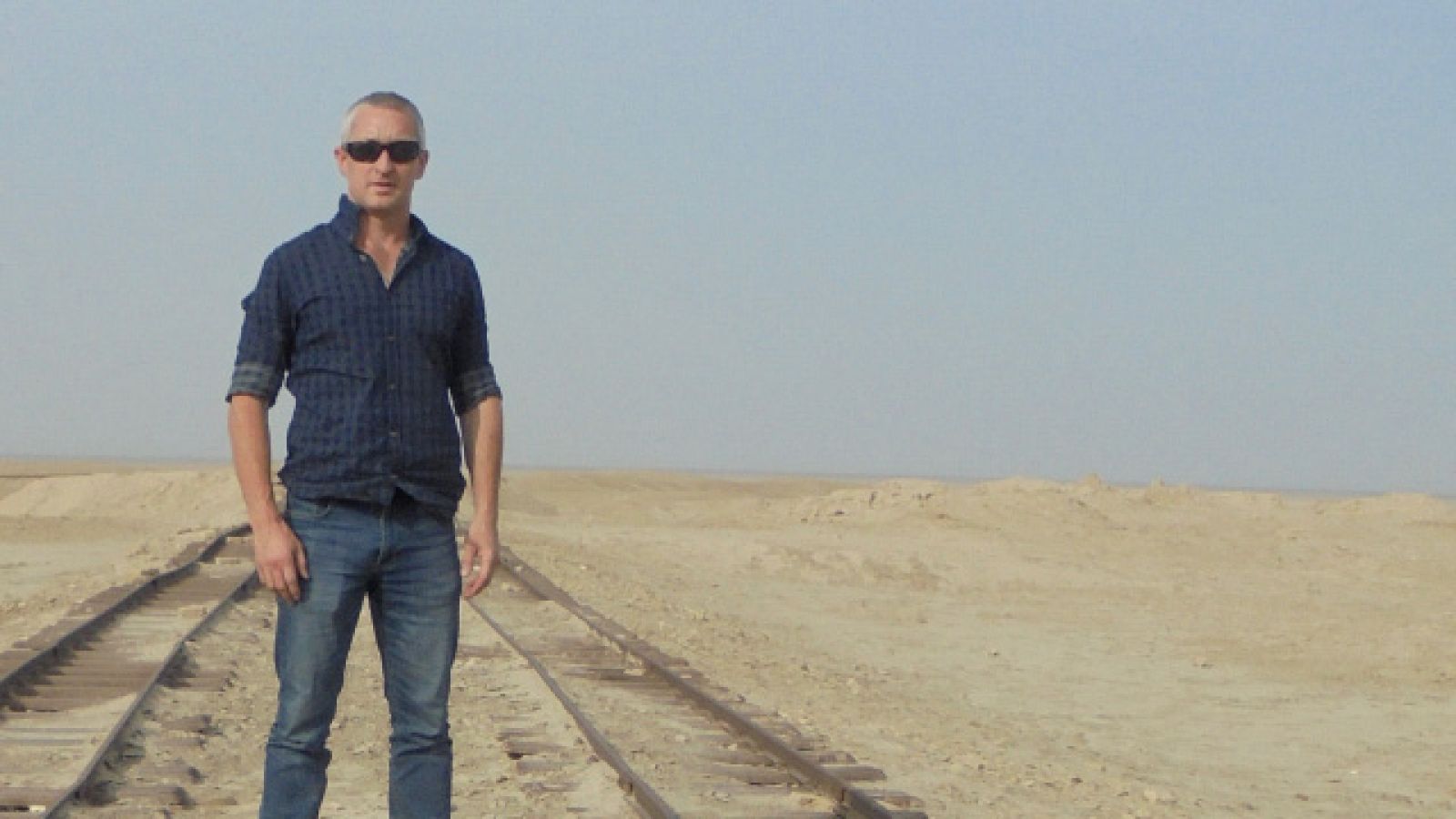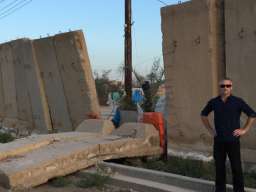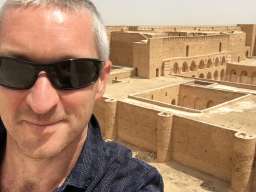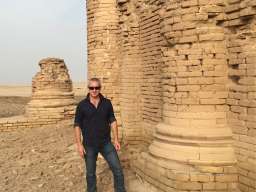ANU PhD student visits Iraq for study trip, plans second visit

Damian Doyle at an archaeological site near Najaf, Iraq, in April 2016. Image: Supplied
A postgraduate student at The Australian National University (ANU) has spent two weeks in Iraq assessing the feasibility of researching the war-torn country’s social movements, and is planning his return.
Damian Doyle, who works full-time and pursues a PhD part-time in the Centre for Arab and Islamic Studies (CAIS), travelled to Baghdad in April with a UK-based tour group.
But the idea for such a trip germinated several winters ago when Damian spent six months in the officer program at Canberra’s Royal Military College, Duntroon.
“It was while I was lying in the mud on gun picket in the freezing cold that I had the idea for a thesis topic,” Damian recounts.
“So I got out of Duntroon and came here.”
Damian in 2012 received his Masters of Middle Eastern and Central Asian Studies. With the encouragement of Dr Kirill Nourzhanov, he commenced his PhD in 2015 and is now supervised by Professor Jim Piscatori.
Damian’s examining political and social trends in Iraq, particularly a movement led by Muqtadr Al Sadr.
“While Mutadr Al Sadr is an enigmatic political figure, and potentially the last nationalist left standing in Iraq, what’s more important, I think, is to understand why people look to him,” he says.
“Why do they take risks with their lives and engage in street politics? Why do they see him as a legitimate figure? That’s what my research is exploring.”
The Iraq trip’s purpose was to determine the logistical, ethical and security considerations of his research proposal, and whether it will be safe for both the Iraqis he intends to interview, and himself.
“My research approach is that I’ll let my participants tell their stories,” Damian explains.
“I want to meet them in cafes, play dominoes with them, ask why they got involved in the street movement. If they feel unsafe, they can call it off.”
Damian says his tour group had security guards every leg of the trip, and was fortunate to visit the Al Askari Shrine in Samarra, which few Westerners have seen since it was bombed in 2006.
Only on one day, while walking through a crowded market, did Damian feel unsafe. Back in Canberra, he learned there was at least one bombing a day in Baghdad during his visit.
“I’ve got a very striking memory from coming in from Baghdad airport. There were a couple of laneways which led on to a main road, both closed-off by a concrete blast wall,” he recalls.
“Near one there was a burnt-out car wreck. Near the other, the blast wall had a pathway chipped out between the concrete slabs.
“Those two little streets in 10 minutes in Baghdad showed me a glimpse of the history of the conflict, how it’s affected people living in the city, but also showed how life goes on around these barriers.”
Damian’s busy juggling work and study and getting travel and ethics approval from ANU ahead of his planned return in the first quarter of 2017.
“My supervisor seems as fascinated by the subject as me,” he says.
“He wants me to have Plans A, B and C, and that’s probably a good approach. For now we’re going for Plan A.”
Dr Kirill Nourzhanov explains CAIS courses and the importance of the Middle East & Central Asia at ANU Open Day on 27 August.


